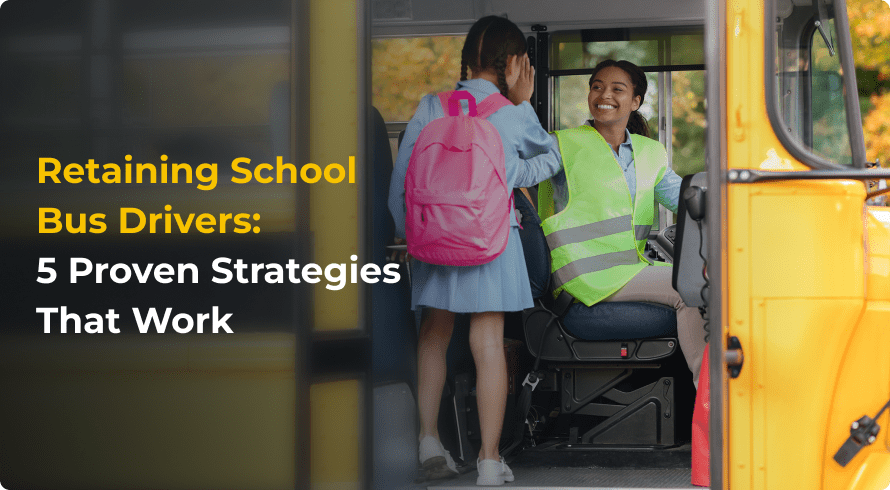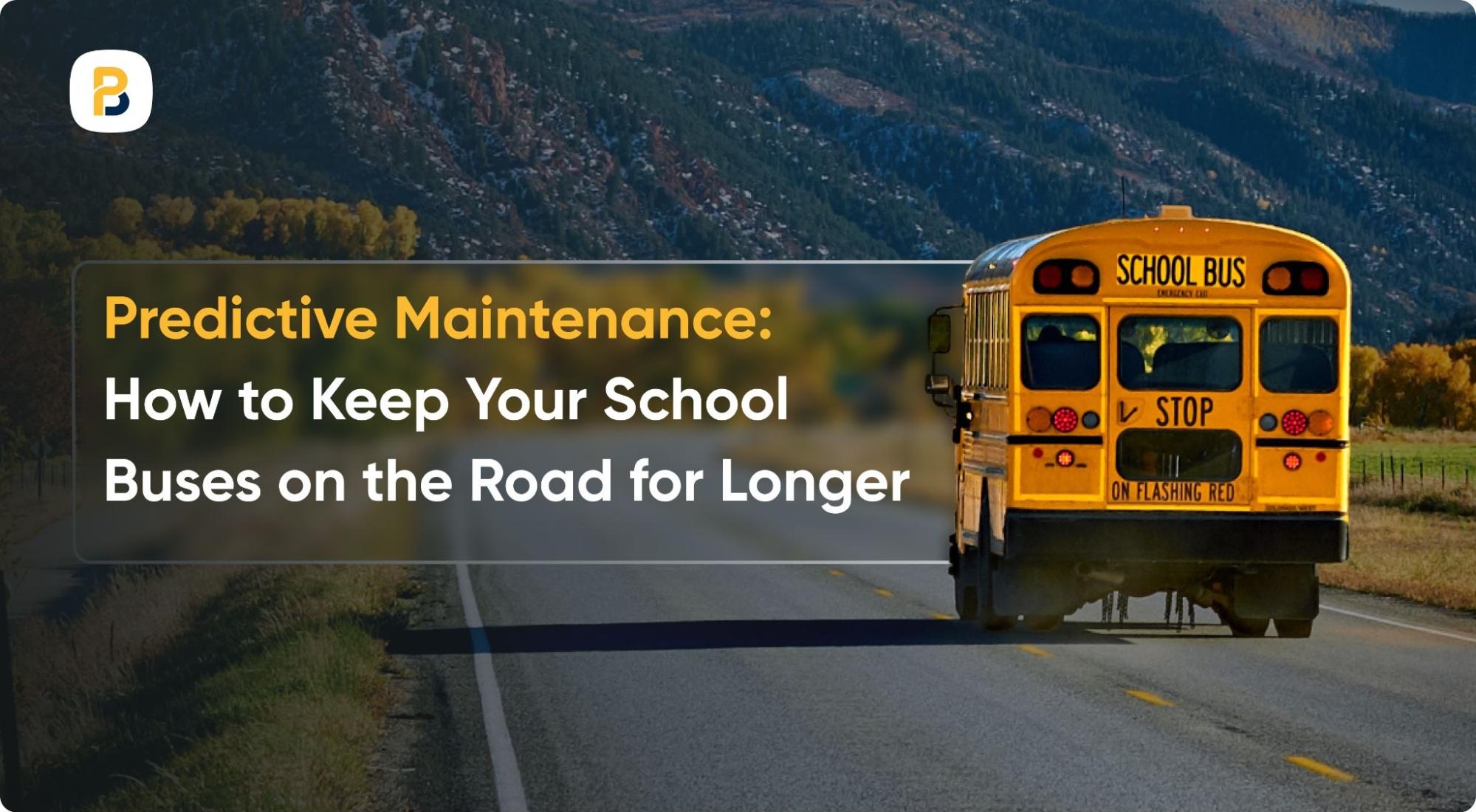The shortage of school bus drivers is one of the most common challenges faced by school districts across North America. According to a BusPlanner Survey, 77% of student transportation professionals report driver shortages as their biggest challenge.
With rising costs, stressful routes, and aging driver populations, school districts must implement strategies to build long-term driver loyalty. Here are 5 effective strategies for retaining school bus drivers.
1. Invest in Professional Development and Recognition
A recent study found that many school bus drivers perceive their roles as dead-end jobs with limited opportunities for growth or skill development. This perception can discourage individuals from viewing school transportation as a viable long-term career.
Accordingly, if drivers are offered a clear path for progression, they’re more likely to choose driving as a long-term career. To improve retention, school districts should invest in professional development programs that enable drivers to gain certifications, enhance their skills, and take on new responsibilities within the transportation department.
Driver recognition programs, such as awards, appreciation events, or highlighting milestones, can also go a long way in boosting morale and reinforcing a sense of belonging.
2. Offer Competitive and Transparent Compensation

Here’s the obvious: monetary benefits matter the most! Drivers expect transparency and fairness when it comes to their compensation.
A study by the Economic Policy Institute found that school bus drivers earn 43% less in weekly wages than all other workers in the U.S.
Providing competitive and structured pay scales, overtime benefits, and periodic raises can make drivers feel valued and secure. Offering retention bonuses at regular intervals and incremental wages enhances performance and ensures drivers’ long-term loyalty to their job.
3. Prioritize Mental and Physical Well-being
Driving a school bus is a tough job that requires focus, patience, and stamina. According to the International Labour Organization, bus drivers often deal with high stress because they face long hours, limited control over their schedule, and little support on the job.
On top of that, sitting for long periods, especially on bumpy, rural roads, can take a toll on the body. This can lead to back pain and other physical health problems.
Here’s how districts can help:
- Offer Health Support: Give drivers access to mental health resources where they can get counseling or stress-management help. Facilitate regular health check-ups to help catch issues early and keep drivers feeling their best.
- Make the Ride More Comfortable: Upgrade buses with comfortable seating that supports the back and reduces strain.
- Build a Positive Work Culture: Encourage open communication so drivers feel heard. Even small changes, like clearer schedules or more breaks, can make a big difference.
When school districts support their drivers’ well-being, they are more likely to stay long-term. It’s a win-win: healthier drivers and safer, more reliable transportation for students.
4. Leverage Technology for Communication and Support
Navigating unfamiliar areas can feel isolating, especially when unexpected road closures, detours, or weather changes come into play. That’s where technology can make a big difference:
- Efficient Route Planning: With the help of route optimization software, districts can generate the shortest and most practical routes, helping drivers save valuable time. More importantly, it ensures clarity and avoids any sort of confusion.
- Turn-by-Turn Navigation: Mobile apps for student transportation can provide turn-by-turn directions, helping drivers stay on track.
- Real-Time Alerts: Instant notifications about roadblocks, accidents, or weather-related disruptions via mobile apps can help drivers adjust quickly.
With these tools, drivers know exactly where to go, when to stop, and how long the journey will take. No guesswork and confusion make the job much easier for drivers and boost their job satisfaction.
5. Involve Drivers in Decision-Making
A study surveyed 301 drivers across 32 New York school districts and revealed that drivers who find personal significance in their work experience have higher job satisfaction, and they exhibit lower turnover intentions. By actively involving drivers in the decision-making process, school districts can foster a sense of ownership and belonging, leading to improved retention rates. Accordingly, districts should:
- Promote Open Communication: Organize regular meetings where drivers can discuss schedules, routes, and safety concerns. This allows for open communication and demonstrates that their insights are valued.
- Anonymous Feedback Surveys: Distribute periodic surveys to gather honest feedback on job satisfaction and suggestions for improvement. Anonymity encourages candid responses, leading to actionable insights.
Final Thoughts
Retaining school drivers requires a combination of respect, recognition, and resources. By applying these proven strategies and solutions, districts can build a workforce of loyal, long-term drivers who show up daily with a strong commitment to their job.
At BusPlanner, we are dedicated to equipping school districts with the technology and insights to strengthen driver retention and streamline operations. Contact us to learn more!







